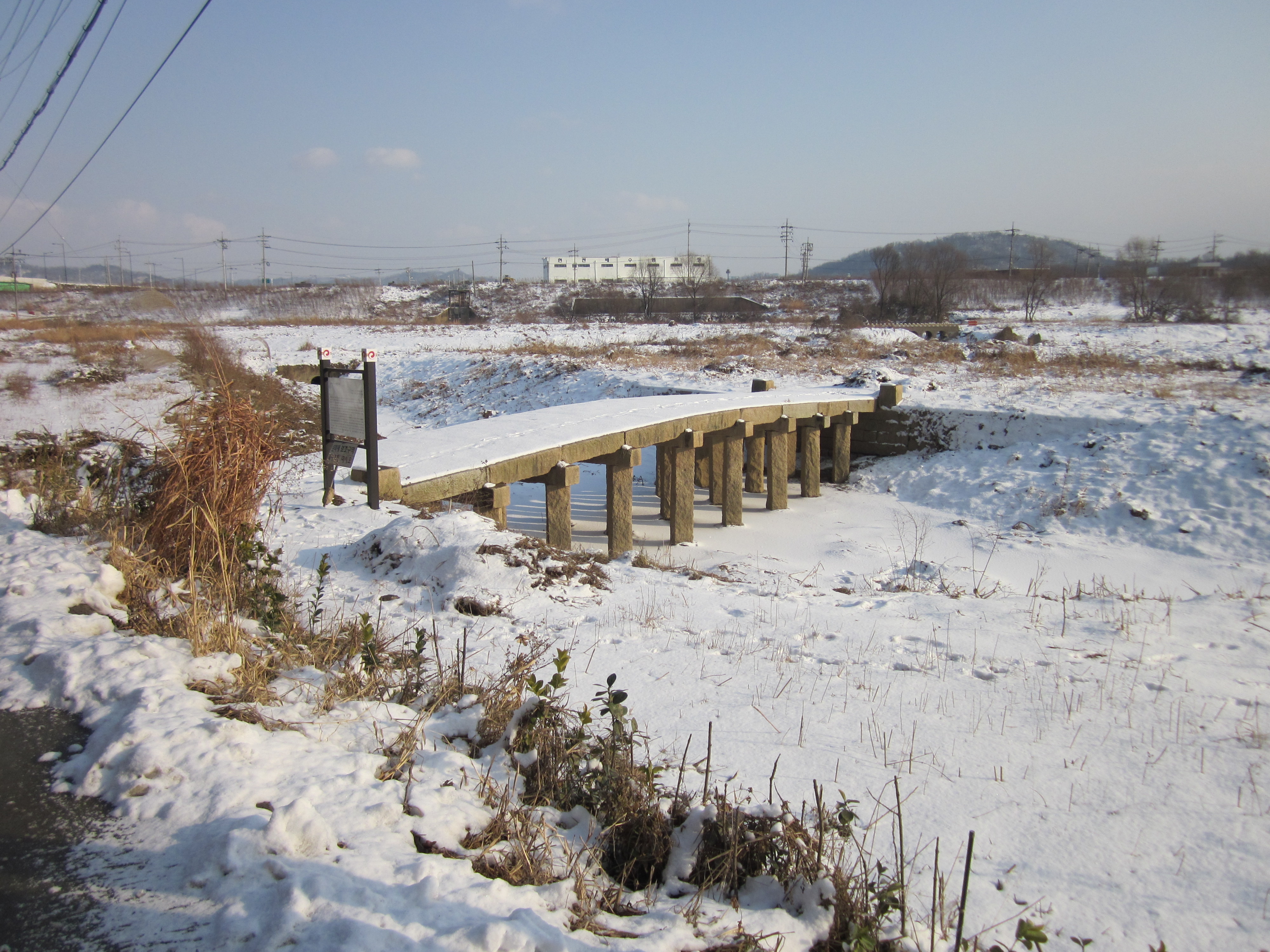Cultural heritage in Goyang
five-thousand years history
Current story of Goyang
2017-03-27
Transportation by road that went to Seoul, Gangmae-dong Seokgyo


At the end of the East side of Haengsin District, which is now developed as a new city, there is Gyeongui Line Gangmae Station. There is a road going to Mt. Bongdaesan in the southern part of Gangmae Station. On this bank you can see the bridge about 50m along the dirt road in the direction opposite to the platform acid. This is Gangmae-dong bridge. Gangmae-dong is a bridge that was used as a traffic passage for Western people on the Han River coast, including Ilsan, Jido, and Songpo of old Goyang. The basic structure of the bridge consists of 18 square pylons with built up piers and a rectangular bridge over them. There are 6 to 7 columns and the piers are in 2 columns. The overall shape of the bridge extends from south to north, with the middle part of the bridge being higher than both sides, forming an overall curve. According to the “Goyanggunji” published in the year of King Yeongjo in 1755, it was named Haepogyo and made of wood. The record as a stone bridge can be seen in the 1920s of ‘Gangmerigyo Bridge Gyeongsinsinjo‘ engraved on the bridge railing. Gangmae-dong Seokgyo can be accessed from Gangmae Station or from Soman Village of Haengsin-dong. It is known to be the only traditional gyoryangbi In Goyang City as a cultural asset of Joseon Dynasty is well preserved.